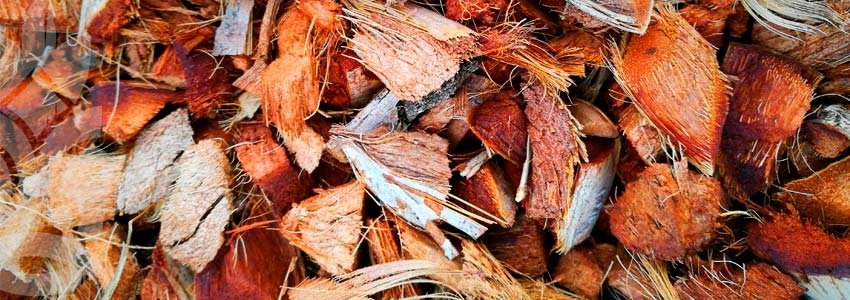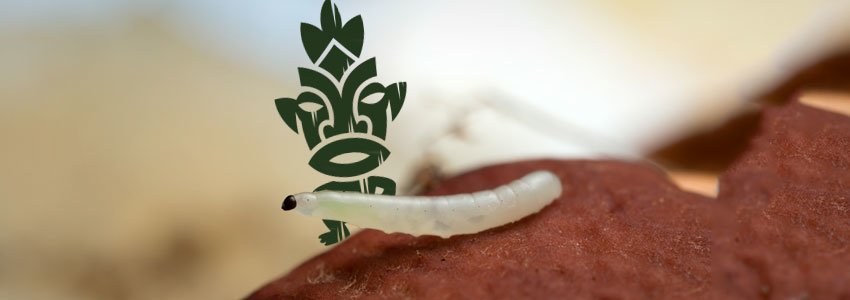Disclaimer
Zativo caters to private customers only, and does not supply commercial or industrial growers with large amounts of cannabis seeds. If we have reason to suspect that the ordered seeds are destined for growing cannabis on a larger-than-private scale, we reserve the right to dismiss that specific order.
Growing Cannabis In Coco
How Coconuts Have Changed Cannabis Cultivation Forever
Coco, also known as coco peat and coco coir is a growing medium made from the husks of coconuts. Used historically for their durable structural qualities, coconuts are also a unique and effective method for cultivating cannabis. Coco is a semi-hydroponic (soilless) growing method that maintains some notable perks associated with traditional soil grows.
Coco is somewhat of a new cultivation method that has only recently hit its stride. In the past, coconut fibres were simply tossed away and hauled to landfills - now they are responsible for producing impressive cannabis crops by cultivators the world over.
COCO: THE BASICS
On the market today, coco comes in the form of tough husk pieces, fibres and dehydrated blocks that are “plug and play” style. Coco is suited to cannabis cultivation as it has a 70:30 moisture to aeration ratio. Many first time growers who use soil make the all too common mistake of overwatering their plants. Luckily, in the case of coco, the fibres allow for sufficient drainage so you’ll seldom have to worry about overwatering. Coco consistently retains a high rate of oxygen, which keeps the medium from compacting and causing excess nutrient buildup.

COCO HISTORY
Coco as a viable substrate first gained prominence in 1986 for the cultivation of roses. Growers found coco to encourage impressive root development and pristine flowers. Despite the general lack of knowledge between variants of coco substrates, suddenly horticulturists became enamoured with the potential of the coco medium.
In the years that followed, many growers from diverse backgrounds experimented with coco to variable results. By the end of the year 2000, coco dominated the rose and strawberry cultivation market in the Netherlands and was equally popular in nearby and remote regions. As cannabis cultivation expanded and resources began to dwindle, coco became the next avenue for sustainable cannabis growing.
WHERE COCO COMES FROM
Since coconuts are indigenous to coastal regions, they contain naturally high concentrations of sodium from the salty sea air. In the past, early-bird cultivators who discovered the effectiveness of coco had to thoroughly flush the substrate with pH balanced water. Failure to do this would likely result in the obliteration of their crop from toxic levels of sodium.
At present, most coco producers whose business is modelled with cannabis cultivation in mind make sure to oversee every aspect of production to create an artificial fertiliser and sodium-free product. Purchasing coco chips or bricks from reputable companies usually means the coco has been pre-washed and buffed with magnesium and lime, optimised for home grows.
If you have any doubts, be sure to contact the manufacturer directly to see if they can answer any questions. If you already have a bag of coco sitting by your door, ready to go, you can take the safe road by flushing it yourself. By using pH balanced water, a few flushes should do the trick to remove excess salt. Consider purchasing a waterproof pH tester, so you can be confident in your results. Most coco coir appears between 5.2-6.2 on the pH scale, which is sublime for cannabis cultivation.

HOW COCO IS GREAT FOR NEWCOMERS AND SEASONED VETS
There are several benefits to using coco as a substrate. Firstly, coco is an inert substance that spurs a faster onset of flowering and larger yields. Unlike growing in soil, coco fibers can be watered daily as they will become fully saturated, then run-off any excess due to a naturally high rate of aeration.
Coco contains little to no nutrients in its natural form and therefore easily adapts to amendments in the substrate, producing varying outcomes. Coco can only take on nutrients that are infused into water, locking out the rest. The medium holds onto nutrients well, but won’t become oversaturated.
COCO IS ENVIRONMENTALLY FRIENDLY
Compared to some methods of growing cannabis, coco is quite sustainable. With the popularisation of peat moss in the past decades, it quickly became evident that this non-renewable resource was not the most environmentally or economically friendly option. Coco, on the other hand, employs parts of the coconut that used to be discarded, allowing for less waste and less use of physical resources to produce effective substrates.

COCO IS REUSABLE
Coco is both environmentally and economically friendly for the consumer. This method allows growers to cultivate multiple crops using the same batch of coco. Once again, nutrient runoff is to thank for this substrate’s amazing durability. Since you can get around three grows from one coco batch, your savings will skyrocket over time. If you find that your coco is on its last leg, consider picking through the lot and adding the usable pieces to regular soil grows to increase aeration.
BIGGER PLANTS, HIGHER YIELDS
Experienced growers who opt for coco coir know that this method accelerates growth and allows for strong root development. Growers that use coco benefit from aspects of both hydroponic and soil operations. The hydroponic side contributes to coco’s amazing amenability and ability to produce consistently high yields of cannabinoid-heavy bud. Additionally, plants can be grown fast, allowing for cultivators to grow several crops throughout the year. On the soil side, plants are kept in regular containers that can be easily moved around a grow space to maximise light exposure, increase airflow, etc.
Several studies have been conducted which show an impressive rate of healthy growth for a number of different plants cultivated using coco coir. In a study conducted on roses, one group was grown using coco, while another was cultivated in granulated rockwool. The results? The coco-grown roses showed a 16% lead over rockwool roses in flower marketability and an 18% increase in higher fresh weight compared to the alternative.

COCO VARIATION
The kinds of coco mediums growers use in cannabis cultivation depend on personal preference. There are several forms of the substrate that can be purchased. Coco chips are a much sought after substrate as they allow for optimal drainage and take longer to decompose if sufficiently aged. Chips that have not been aged or chemically treated are at a greater risk of decomposing and therefore cannot be reused to their full capacity.
Another type of substrate is coco pith, which results from the coconut’s husk separation into coco fibres and coco pith. Coco pith is very fine and will break down quickly unless it has been aged long enough to become moderately durable.
Coco blocks are compact, user-friendly substrates that often require rehydration in order to use. This process is fairly simple, requiring only a two-five gallon container, a strong bucket liner and water. After rehydrating the substrate, plants can then be transplanted directly into the medium, or the coco can be mixed with potting soil, depending on the style of grow you choose.
PEST CONTROL
Luckily, coco does not contain many of the small and microscopic pests found in most run-of-the-mill potting soil. Additionally, pests themselves aren’t attracted to the coconut environment as they would be to substances like peat moss. The one prevalent pest coco does encounter is that of the fungus gnat. This particular breed enjoys laying its eggs in the top most layers of a substrate, so long as it contains enough moisture to allow for their survival.
Once the eggs have been laid, the larvae pose a legitimate threat to a plant’s natural defences by destroying root systems and spreading disease. Once fungus gnat larvae have taken hold of a plant, they can be particularly difficult to get rid of. In order to decrease the frequency of this occurrence, consider allowing the topmost part of the coco medium become dry enough that it cannot sustain larval life. While this slight lack of watering may slow down the cultivation period by a margin, it helps to keep you from losing your entire yield.

BACTERIA
Although coco is adverse to most pests, it provides a fecund breeding ground for healthy bacteria to form in the root systems. Remember, the presence of bacteria is not always a bad thing, just like many of the bacteria that help to keep humans functioning healthily. Coco allows for a diverse environment of bacteria and fungus to form, such as bacillus and trichoderma, which encourage healthy plant growth and vigorous root development.
Trichoderma is especially important since it helps to fight and eliminate other kinds of harmful fungi that prey on many cannabis varieties. Despite being a parasitic fungus, trichoderma is extremely beneficial, forming on roots, protecting them from foliar fungal diseases. Bacillus helps to ward off pests like caterpillars as a sort of natural defense system, alongside terpenes. Bacillus is commonly extracted and used as an all-natural insecticide for numerous different species of plants. It also helps to fight grey mould and mildew and is resistant to UV light in the form of Bacillus Pumilus.
COCO IN SOIL GROWING
While coco is a perfectly acceptable medium on its own, it works symbiotically with soil to enhance aeration and optimise near-immediate nutrient uptake. Coco is said to hold up to 1000 times more air than traditional soil and naturally contains cellulose, lignin and potassium.
Coco is low in calcium and almost always requires either a cal-mag supplement to boost its levels of both calcium and magnesium. A common coco-soil mix is made by combining a grower-determined ratio of coco and perlite. This mixture encourages optimal water, nutrient and air retention, with the added benefits of perlite’s ability to fight excess soil compaction.
COCO CONS
While most associations with coco as a medium highlight the benefits of this groundbreaking style, there are some cons with the substrate as well. Largely, the same things that make coco great are also its drawbacks. Since coco is inert, growers must manually provide all nutrition for the plants, as there is very little to begin with. Although this may seem like a significant drawback, the huge range of human error that coco allows for when it comes to watering and nutrition is worth the extra work.
While the advent of the internet has helped to shed some light on the scientific and social implications behind coco production and usage, there is still a lack of definitive information for cannabis cultivators using coco. Although its effects on certain plants are extremely positive, coco doesn’t always work for every breed. Concerning cannabis, the broad range of coco substrates and lack of standardisation contributes to a wide spectrum of outcomes.
COCO SHORTAGE
The popularity of coco as a substrate grew virtually overnight in the mid-1990s, causing a worldwide shortage of raw materials. Up until this point, producers had an influx of product resulting from years of unused coconut husks leftover from other iterations of commerce. As word got around, coco demand changed drastically. In order to keep up with interest, producers began to cut corners, diminishing the quality, efficacy and safety of the product.
Essentially, farmers and manufacturers began to ship products that could have made contact with soil, chemical fertilisers and more, without undergoing the necessary sifting and screening to ensure utmost quality and business transparency. Some batches contained toxic levels of salt, while others held on to pesticides and herbicides that could easily thwart the effectiveness of the substrate.
AN IDEAL MEDIUM
As cannabis cultivators, it is imperative to consider not only how a growing medium will influence your crop’s yield, but how it will affect the environment and the humans that consume the finished, processed buds. As years of stigma finally begin to ease regarding cannabis and as more information circulates on the web, nearly anyone with access to cannabis seeds or clones can become full-time home growers.
While the first few grow cycles can be daunting for novice growers, choosing a sustainable and effective method such as coco helps to limit the possibility of a failed crop and wasted hours of dedicated work. In the pursuit of growing the healthiest flowers possible, spend the necessary time it takes to research and acquire the right kind of substrate to fit your parameters.
Since coco coir is one of the most versatile growing methods, it provides room for beginner and seasoned growers to learn and experiment with new techniques for success. While strictly soil and hydroponic grow operations will likely continue well into the future, alternative and supplementary techniques should be watched closely in order to move cannabis cultivation into a progressive future.




